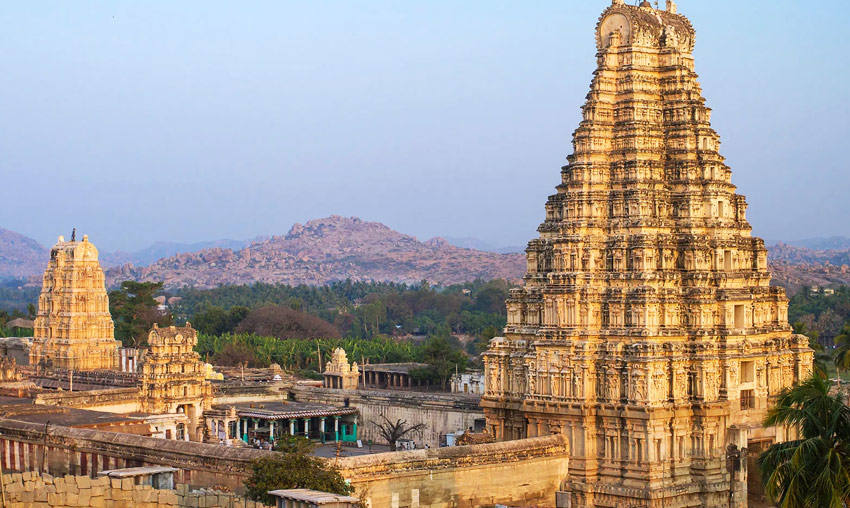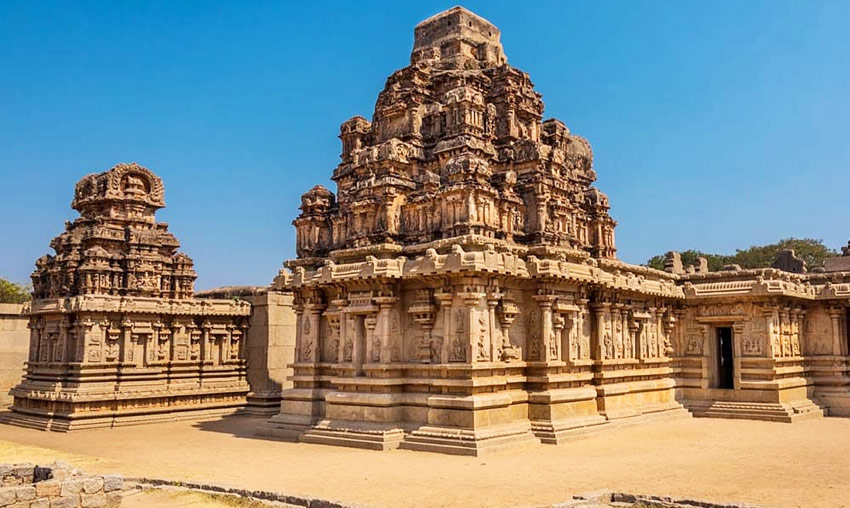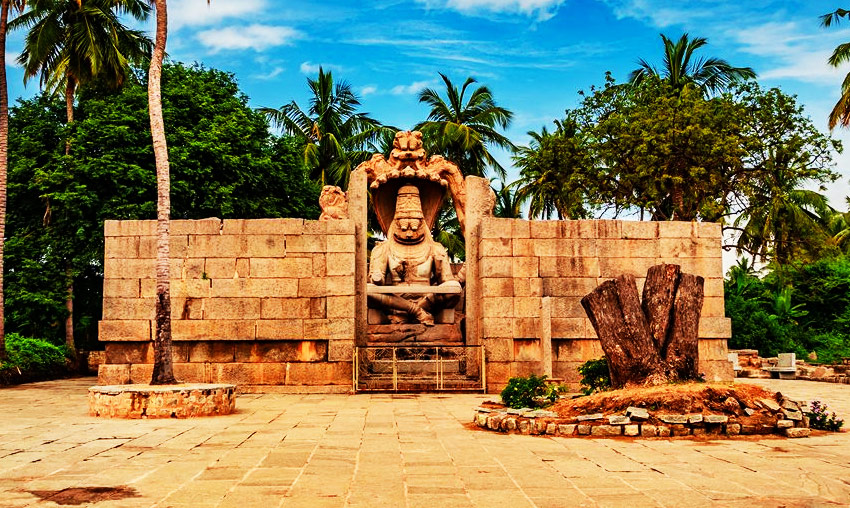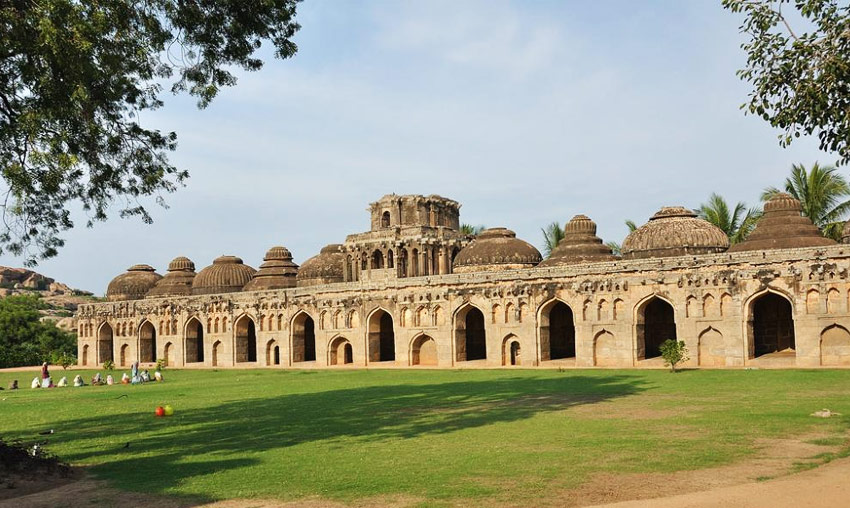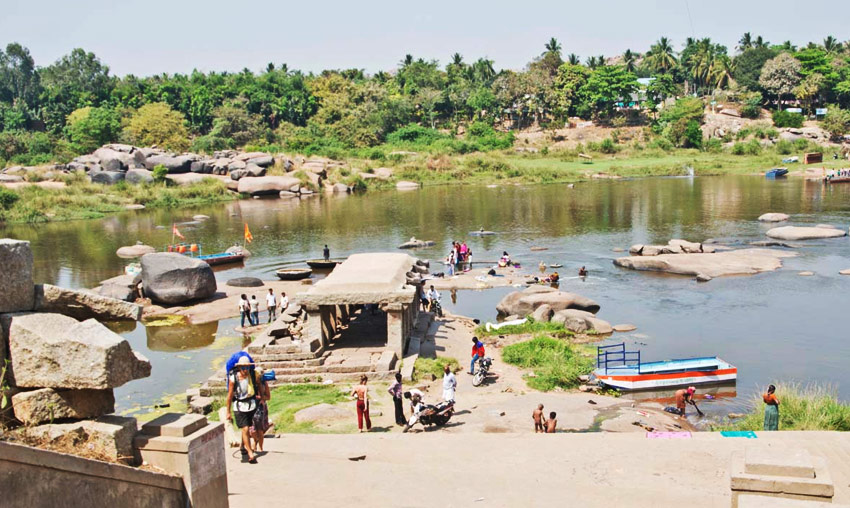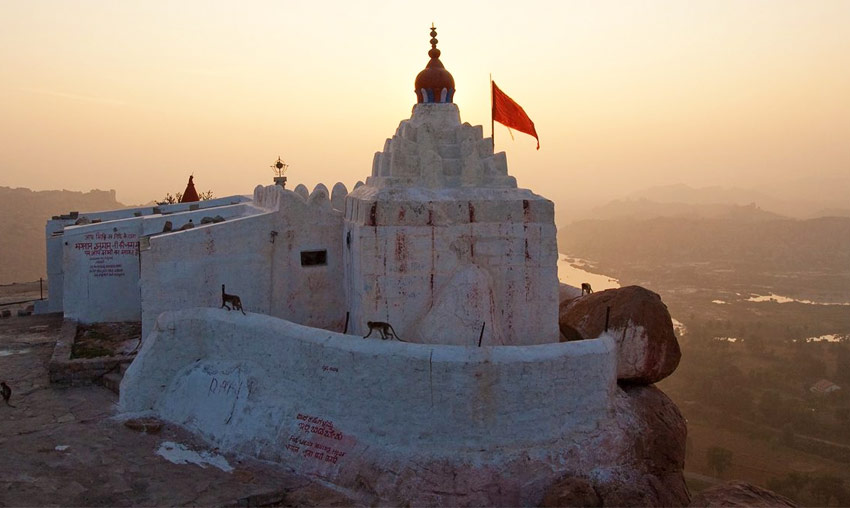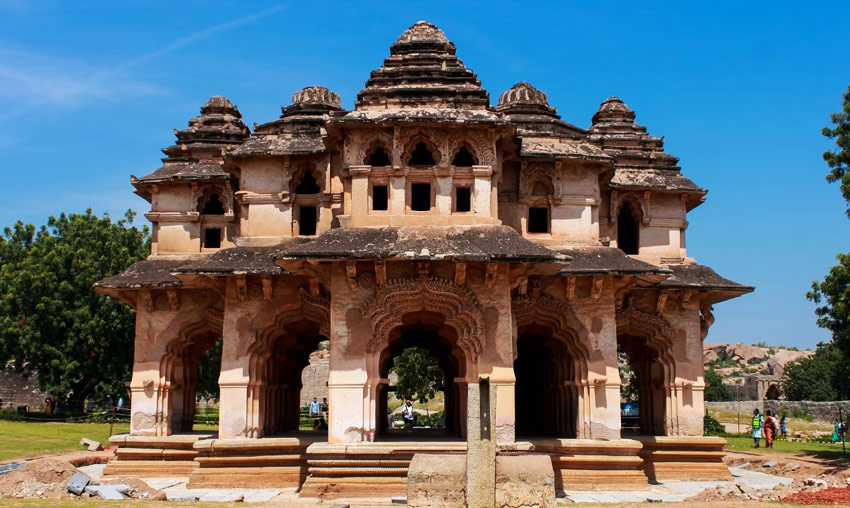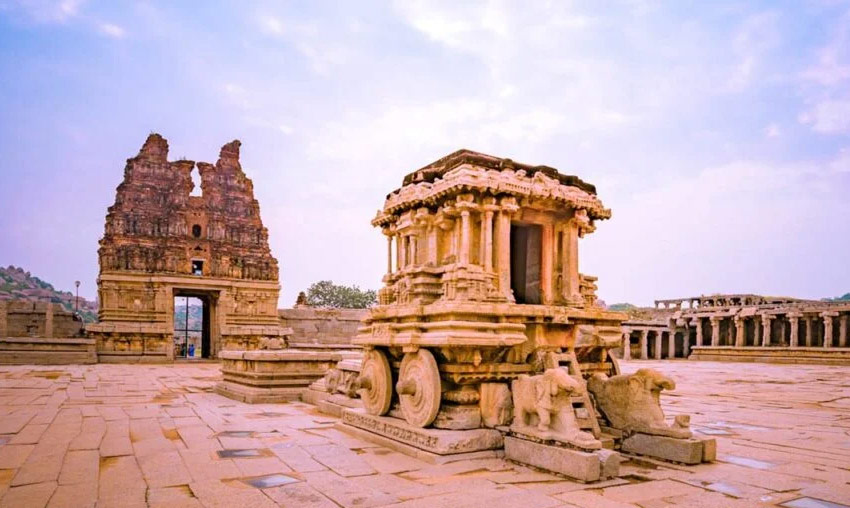Virupaksha Temple, Hampi | Timing, History & Best time to Visit
On the banks of the Tungabhadra river near Hampi stands the Virupaksha temple, also known as the Prasanna Virupaksha temple. Constructed in the 7th century, the temple’s stunning design and rich history have earned it UNESCO World Heritage status. One of Lord Shiva’s manifestations, known as Lord Virupaksha, resides in the temple. Although it is now in Hampi, it was formerly a minor shrine in the center of the grand and historic Vijayanagara empire. The temple’s rich history is demonstrated by the exquisite stone inscriptions on its walls that date back to the seventh century. If you are interested in architecture and history, you should definitely visit the temple while you are in Hampi!
As is typical of temples of south Indian architectural design, the temple features large towers, or gopurams, that serve as entrances to the inner sanctums. Numerous interior halls and passageways, all embellished with elaborate stone work, are accessible from the gopurams. Many gods and goddesses from mythology are portrayed in the sculptures. Although Lord Virupaksha is the temple’s primary deity, a few other Hindu deities also call it home. The temple is generally less crowded, though it does see a lot of devotees during festival seasons like the Car Festival.
History and Origin of Virupaksha Temple, Hampi
Consort of Goddess Parvathi, known as ‘Pampa’ in the area, is Lord Virupaksha, for whom the temple is constructed. Additionally, Hampi’s ancient name, Pampakshetra, alludes to the Thungabadra river, which was formerly known as Pampa.
The Vijayanagara empire’s capital formerly flourished where Hampi presently stands. Nonetheless, it is believed that the Virupaksha temple predates the Vijayanagara empire’s establishment of its capital city in the area. For Virupaksha, a modest building was constructed in the ninth century A.D. during the Chalukyan and Hoysala periods. However, during the Vijayanagara empire’s reign, the temple complex was enlarged and more beautiful stone works were added.
According to the Archaeological Survey of India, the temple was constructed by Lokamahadevi, the queen of Vikramaditya II, to honor the King’s victory over the Pallavas of Kanchi. As a result, numerous inscriptions honor the queen’s generosity by referring to the temple as “Lokeshwara Mahasila Prasada.” During King Deva Raya II’s reign, the once modest “pre-Virupaksha temple” expanded to include numerous gopurams and pillared rooms. Many portions of the magnificent Virupaksha temple were fortunately unaffected by the succeeding assaults of Vijayanagar by northern armies, which destroyed the majority of the Vijayanagar empire and Hampi.
Architecture of Virupaksha Temple, Hampi
South Indian architecture is used in the construction of the Virupaksha temple. The greatest of the temple complex’s three gopurams is located in the east, while the other two are smaller gopurams located in the inner north and inner east. The gopuram at the eastern entrance is 50 meters high and contains nine stories. The exterior of the gopurams is decorated with exquisite sculptures of numerous Hindu deities. You will enter the outer courtyard, which has numerous sanctums for lesser deities, after passing through the gopuram at the eastern entry. The complex’s Bhuvaneshwari shrine features elaborate stonework and elaborate pillars that showcase Chalukyan architecture.
See more place to visit in Hampi
From the outer courtyard, which leads to the inner courtyards and other sanctums and statues, you may also view smaller gopurams. The sanctum of the triple-headed Nandi, also known as Vimanam, Lord Shiva’s vehicle, is reached by the hall with 100 pillars. This hall’s inner sanctuary leads to the temple of Lord Virupaksha. The walls of this passageway are decorated with elaborate ornamentation, and he is shown as a Shiva linga. The temple also has the temples of the gods Pampa, Bhuvaneshwari, Nava Grahas, and Pataleshwara, another manifestation of Shiva.
The Virupaksha temple complex also includes numerous halls with pillars. According to legend, King Krishnadevaraya of the Vijayanagara kingdom made significant contributions to the temple’s construction during his reign. ‘Maharanga Mandapam’, the central pillared hall, was constructed in honor of his coronation in 1509-10 A.D. It is among the temple’s most elaborate constructions. Krishnadevaraya’s contributions to the temple are depicted in inscriptions on the stone close to this hall. There are numerous ruins visible outside the temple as well. According to legend, these are the remains of a former marketplace close to the temple.
Virupaksha Temple, Hampi – One of the Pattadakal Temples
The Pattadakal monuments are a group of Hindu and Jain temples in Karnataka, of which the Virupaksha temple is one. Every temple is listed as a UNESCO World Heritage Site. They show a distinctive architectural style that was created by combining northern and southern Indian architectural influences. The idol of the primary god of the Virupaksha temple, one of the most artistic of all the Pattadakal temples, has survived invasions and is still revered today with much fanfare.
Festivals and Celebrations at Virupaksha Temple, Hampi
The temple of Virupaksha hosts the Chariot Festival in March or April. A lovely wooden chariot adorned with lamps and flowers holds a statue of Lord Virupaksha. The idol is carried through Hampi’s chariot street in a massive parade. The procession’s chants and music commemorate the union of Devi Pampa and Lord Virupaksha.
A large number of devotees attend the temple’s colourful ‘Phalapuja festival’ in December, which commemorates the marriage of Virupaksha and Pampa. This takes place between November 3rd and November 5th.
Additionally, the Virupaksha temple celebrates the annual Shivaratri, a nightlong worship service in honor of Lord Shiva. Typically, it occurs in February or March.
Tips For Visiting Virupaksha Temple, Hampi
1. It is not permitted to wear shoes within the temple. Put on some fresh socks if you find it difficult to walk without them.
2. It is forbidden to take pictures of the idols within the sanctums.
How To Reach Virupaksha Temple, Hampi
Banglore is 350 kilometers away from Hampi. From Banglore Railway station, you can go to Bellary in at least seven hours by express and passenger train. It will take you one hour and forty-five minutes to travel by cab from Bellary to the Virupaksha temple in Hampi.
Hospet Junction is the closest train station to the Virupaksha shrine. It takes about nine hours to go from Bangalore to Hospet by express and passenger train. The drive to the Virupaksha temple from Hospet takes half an hour.
Timings : 9:00 AM – 1:00 PM, 5:00 PM – 9:00 PM
Time Required : 1-2 hrs
Dress Code : None. But it is recommended to dress modestly as it is an active temple.
Active Temple : Yes
Completed in : 14th Century
